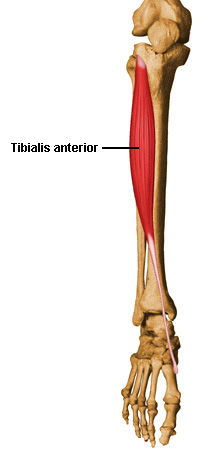Shin Splints - Myths debunked: UPDATE!

I wrote an article in February regarding shin splints – myths debunked. I thought it was a good idea to update this article. You can read the original article here
Categorising Shin Pain - What could be causing it?

1. Bone
Includes irritation of the outer layer (periostitis) and stress fractures. These are the true meaning of shin splints.
Differential diagnosis between bony and muscular pain. Direct pain on the bone to touch and continued pain when not running

2. Muscular
Most likely reason for shin pain. Symptoms include a feeling of tightness, pins and needles, numbness, no pain when not running
3. Tendon
Tendinopathies. For example: Tibialis Anterior, Extensor hallucis longus, extensor digitorum longus, Peroneals. These muscles make up the anterior compartment of the shin.
Tendons are painful when squeezed and you may have a painful click

Anterior compartment pain– other symptoms
If you are suffering from a painful shin, you may also be feeling a weakness in the muscles of the anterior compartment. In extreme cases, the pain can be so high that these muscles fail to perform their function!

Anterior Compartment pain– the cause
Essentially, this is an over-use issue. I.e.: the muscles of the anterior compartment over work which causes pain and then leads to weakness or failure to work. This sounds counter-intuitive, we know! The reason why is because the brain senses pain and acts as an inhibitor, to reduce the continued over-use and potential serious over-use injury. Therefore, don’t ignore it, as it may not just go away! Recovering from Anterior Compartment pain

These muscles are over-working because others are under working! Therefore something has to change. Perhaps checking your footwear isn’t worn out. We here at Mike Stamp Physio & Pilates have identified both through evidence of research and experience, that strengthening the gluteals and altering running posture at the centre can have a dramatic, positive change in Anterior Compartment pain. It is noteworthy here that this is not a quick fix. As with any change and strengthening program, changes needs to be made gradually and patience and persistence are required. This includes your return to running. Returning to running is part of your rehabilitation and returning to your baseline of running is ill-advised. How do you know if you are doing too much too soon?
This is where we come in! By having regular contact with your therapist, the advice and rehabilitation is tailored to you, to ensure your rehab stays on track. Your therapist will ensure you are not doing too much, or too little rehab, and detract you from rushing back to running. For more advice and guidance on Shin pain, contact us on 07399 500545. Be sure to like and follow us on Facebook.com/mikestampphysiotherapy.



















